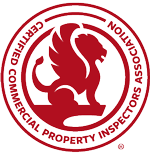CCPIA’s Life Safety Inspection Course teaches students how to perform a life safety inspection on commercial buildings, including those with residential occupancy. This comprehensive fire and life safety training covers essential life safety principles, relevant codes and standards, and the scope of the life safety portion of a commercial property inspection for real estate transactions and property maintenance.
Fire and Life Safety Training
Fire and life safety training is crucial for commercial property inspectors as it allows them to identify and report potential hazards, reducing the risk of injury, loss of life, or property damage for their clients. This training is available in an online, on-demand format and provides a downloadable certificate upon successful completion. The instructions for inspections follow Section 6.5.12 of the International Standards of Practice for Inspecting Commercial Properties (ComSOP).
Life Safety Principles
The life safety principles are based on potential hazards in commercial buildings and the corresponding measures implemented to mitigate risks associated with them. We will cover building construction and how it relates to a building’s structural integrity, building design and compartmentalization of fires. We will also take a deeper look at applying this information to the zonal approach for the means of egress system and fire protection and detection systems. Understanding all of these principles and concepts are necessary for performing life safety inspections in commercial buildings and communicating findings to clients.
Life Safety Codes and Standards
This course will review and cite the most commonly used life safety codes and standards by the local AHJs including: International Building Code (2021), International Fire Code (2021), NFPA 101: Life Safety Code, NFPA1: Fire Code Access , NFPA 80: Standard for Fire Doors and Other Opening Protectives, NFPA 96: Standard for Ventilation Control and Fire Protection of Commercial Cooking Operations: NFPA 5000, Building Construction and Safety Code, and NFPA: Fire Protection Systems: Inspection, Test and Maintenance Manual. This fire and life safety training also connects historical incidents that have shaped safety regulations. The safety regulations apply to building construction and design, as well as the design, installation, and maintenance of relevant building systems and components. All of these implementations can be costly to inspection clients if not already existing.
Life Safety Inspection Instructions and Checklist
We divide life safety inspection instructions into two categories: passive fire protection and active fire protection. Passive fire protection topics include the means of egress, fire doors, exit doors, fire walls, fire barriers, fire partitions, fire stopping, and emergency lighting and signs. The topics for active fire protection include automatic sprinkler systems, suppression systems, fire extinguishers and advanced sprinkler components, like pumps and fire department connections, and standpipes.
We will cover fire extinguishers inspection training, sprinkler system inspection training, and other inspection training aspects that are within the scope of the ComSOP. Commercial property inspectors, property managers, and maintenance personnel can use this fire and life safety training online course to report to clients a general inventory and review of building conditions based on visible conditions.
Additional Information
This is a self-paced course. There are quizzes throughout, and students are required to answer all quiz questions correctly before moving on to the next lesson. There is a final exam at the end of the course. Students have an unlimited number of attempts but a time limit of two hours to complete the exam. Upon successful completion and passing the final exam, students will be able to download a Certificate of Completion, which is auto-generated in their own name.


